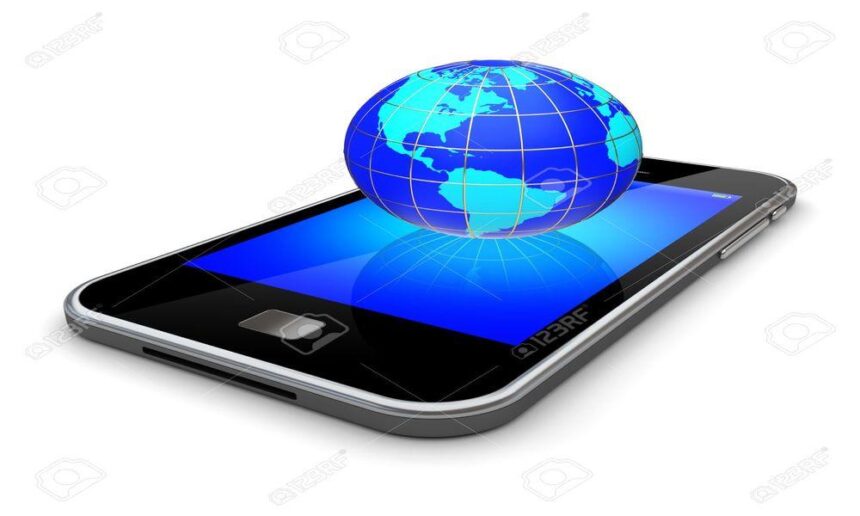Ever since it became possible to be connected to the internet through mobile phones, there has been revolutionary changes in the way people work, socialise, create and share information, and coordinate the flow of people, goods, and information globally. However, it is still underestimated because the people are not able to fully see and comprehend the scale of this revolutionary change and transition.
Currently, one fifth of economic growth in developed countries is generated through the internet. Hundreds of millions of people are using social media platforms such as Facebook and Twitter to update personal information, as well as to promote their businesses in an efficient way.
Mobile phones have already become an essential need for us. A Boston Group survey states that 80 percent of Russians would choose their mobile phones over alcohol, whilst 86 percent of the Japanese would refuse to eat chocolates, 84 percent of Americans would refuse to use satellite navigation, 85 percent of the Chinese would refrain from drinking coffee, 86 percent of the French would stop going to fast food chains, 60 percent of the Japanese would refuse to do exercise, 43 percent of Koreans would be comfortable to not drive, and 56 percent of the Japanese would refrain from sexual relations.
The Consumer Barometer 2015 survey suggests that the United Arab Emirates uses mobile phones the most with 91 percent usage, followed by 88 percent in both Singapore and Saudi Arabia, 83 percent in both Sweden and South Korea, 80 percent in Spain, 79 percent in both Norway and Hong Kong, 78 percent in Taiwan and 77 percent in Australia.
MOBILE ECONOMY
The mobile phone sector has already become a part of economy in regards to the opportunities it creates for industries. Therefore, the term ‘mobile economy’ has come into use.
This sector accounted for 3.4 percent of the global economy, which equaled 2.4 trillion USD, in direct (investment, operational expenditure and sales) and indirect (turnovers of goods, services, applications, contents, and advertisements developed with mobile technology) ways.
The rapid increase in mobile connection, its users, and data flow is having a great influence on socio-economic development. Many industries are leaning on virtual methods to produce brochures, advertise products, and hold sales to reduce costs and give a new feel to consumers. As a result, profitability increases.
A World Bank survey says that a 10 percent increase in the use of mobile phones by developing countries with low to mid income results in economic growth of 1.4 percent.
USE OF MOBILE PHONES IN MONGOLIA AND ITS LIMITATIONS
A 2014 report produced by the Communications Regulatory Commissions of Mongolia (CRCM) concluded that the number of people who actively used mobile phones (for six consecutive months at least) reached 3 million. This number exceeded the population, and was 48 percent higher than the year before.
However, 1.6 million of the total population is using smartphones to connect to the internet. It shows that Mongolia’s use of smartphones has reached 55 percent, which comes close to 57 percent of the United States. Forty percent of the people who regularly use mobiles phones in Mongolia receive service from Mobicom, 32 percent from Unitel, 16 percent from Skytel, and 12 percent from G-Mobile.
Approximately 88 percent of Mongolian users have prepaid phones while 12 percent use postpaid mobile phones. It shows that Mongolia is a developing country with low income, and the mobile phone tariffs are clearly high compared to the purchasing power of the people.
The relatively higher price means that Mongolia has limitations to develop the mobile economy – the users are having difficulties downloading images and data from the internet. Although access to information and communications technology costs a lot in a large country such as ours, it has an important role to play.
The total length of the communications network currently set up in Mongolia is 34,000 km. Half of this is owned by a state-owned company called Mongolian Communications Networks, 7.3 km is owned by Mobicom, 6.9 km by Skytel, 1.4 km by Railcom and 1.2 km by Gemnet. As they do not have their own networks, mobile operators face high costs to rent channels from others. Therefore, the internet tariffs have significant differences in soums, which has become a limitation for the mobile economy to be formed in Mongolia.
The pace of development today requires the regulations set forth by the Mongolian government to support creating free competition of prices in the mobile communications sector and to introduce technological advances swiftly. Whilst other countries are talking about introducing 5G (the fifth generation mobile network), Mongolia’s CRCM has taken several years to discuss how to make 4G (the fourth generation network) available, without coming to a decision. It has also become a limitation to development and growth.
Introducing a new generation mobile network brings all kinds of benefits to the users. In order to deliver this new service, all operators need to work together.
In order to create a mobile economy in Mongolia and ensure wider delivery of electronic services, the operators need to be able to connect people’s phone numbers with their electronic identity cards allowing the SIM cards to be validated directly. Furthermore, introducing electronic wallets allowing people to use their mobile phones to make purchases would richen the lifestyle and improve productivity of businesses. Having an intelligent network that connects all electronic devices would also have the same impact. The time has come to turn mobile phones and devices into the main interface that connects the cyber world.
The cyber future of Mongolia should also be bright.
2015.09.23












